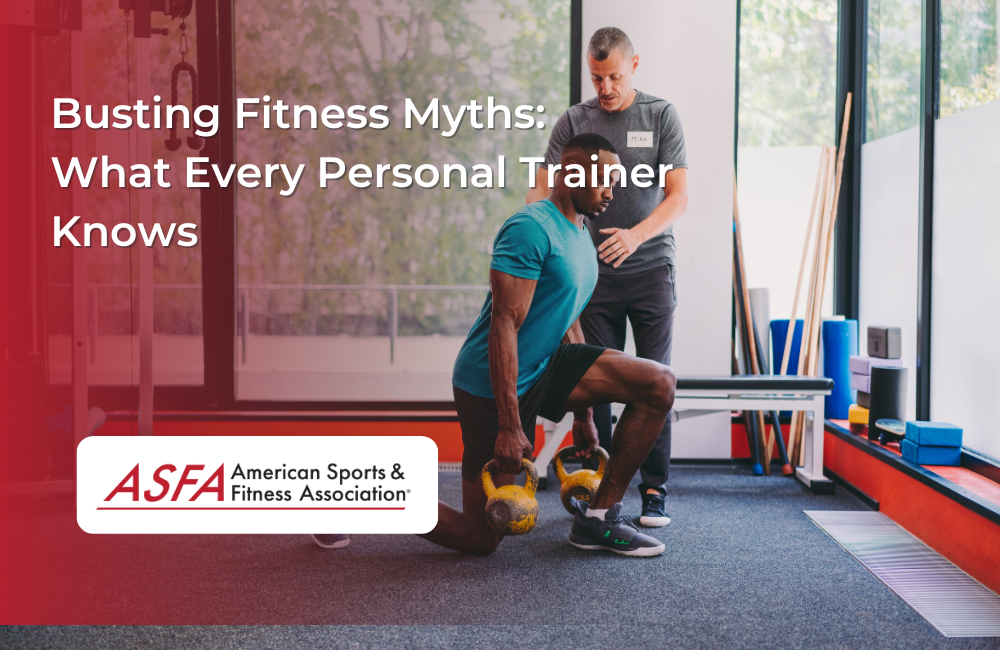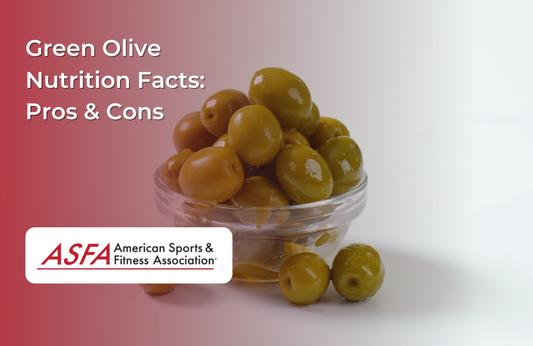Debunking Common Fitness Myths: In-Depth Insights for Smarter, More Effective Workouts
In the ever-evolving world of fitness, myths and misconceptions are rampant, often leading to confusion and misinformed decisions. A well-structured exercise routine can help dispel these myths and lead to more effective workouts. These myths can be perpetuated by various sources, including media outlets, fitness enthusiasts, and even some personal trainers. Believing in these myths can hinder your progress, lead to unnecessary frustration, and even increase the risk of injury. To help you navigate your fitness journey with clarity and confidence, we’re going to delve deep into five common fitness myths that every knowledgeable personal trainer knows aren’t true.
Myth #1: You Can Spot Reduce Fat in Specific Areas of the Body
One of the most enduring fitness myths is the belief that you can target fat loss in specific areas of your body, such as your belly, thighs, or arms, by focusing your exercises on those areas. This concept, known as "spot reduction," is not just misleading—it's scientifically incorrect.
The Reality:
-
Fat Loss is a Systemic Process: Fat loss occurs when you create a calorie deficit, meaning you burn more calories than you consume. When your body enters a state of fat loss, it uses stored fat from various parts of your body for energy. However, the order in which fat is lost from specific areas is determined by your genetics, hormones, and overall body composition—not by the exercises you perform.
-
Understanding Fat Distribution: Your body's fat distribution is influenced by genetic factors and hormones, which means that where you gain or lose fat first is beyond your control. Some people may notice fat loss in their face or arms first, while others may lose fat in their abdomen or legs. This variability can be frustrating, but it's important to focus on overall fat loss rather than targeting specific areas.
-
Localized Muscle Toning vs. Fat Loss: While you can't spot reduce fat, you can target and tone specific muscles. For example, abdominal exercises will strengthen your core muscles, but they won't directly reduce belly fat. As your body fat percentage decreases, your toned muscles will become more visible, giving you the defined look you desire.
-
Effective Strategy: The most effective way to reduce overall body fat is through a combination of regular cardiovascular exercise, full-body strength training, and a healthy, balanced diet. High-intensity interval training (HIIT) is particularly effective because it maximizes calorie burn and fat loss while preserving lean muscle mass.
Practical Tip: Incorporate compound exercises that work multiple muscle groups simultaneously, such as squats, deadlifts, and push-ups. These exercises burn more calories and help build lean muscle, which in turn boosts your metabolism and aids in overall fat loss.
Myth #2: Lifting Weights Will Make You Look Bulky and Masculine
A common myth, particularly among women, is the fear that lifting weights will result in excess muscle mass and a bulky, masculine physique. This misconception stems from a misunderstanding of how muscle growth works and the physiological differences between men and women.
The Reality:
-
The Role of Hormones: Muscle hypertrophy (significant muscle growth) is largely driven by testosterone, a hormone that is present in much higher levels in men than in women. Women generally have lower levels of testosterone, which makes it difficult to gain large amounts of muscle mass without specific training regimens and nutritional strategies aimed at muscle growth.
-
Strength Training for Tone and Definition: For most women, lifting weights leads to a leaner, more toned appearance rather than bulkiness. Strength training increases muscle definition, improves posture, and enhances overall body composition by reducing body fat and increasing lean muscle mass. These changes contribute to a more sculpted, athletic look.
-
Increased Metabolism: Muscle is metabolically active tissue, meaning it burns more calories at rest than fat does. As you increase your muscle mass through strength training, your resting metabolic rate (RMR) increases, making it easier to maintain a healthy weight and reduce body fat.
-
Bone Health and Aging: Strength training plays a crucial role in increasing bone density, which is vital for reducing the risk of osteoporosis and fractures, particularly as you age. This benefit is especially important for women, who are at a higher risk of osteoporosis.
-
Functional Benefits: Strength training improves functional strength, which enhances your ability to perform everyday activities with ease. It also reduces the risk of injury by strengthening muscles, tendons, and ligaments.
Practical Tip: Incorporate a well-rounded strength training program that targets all major muscle groups. Aim to perform strength training exercises 2-3 times per week, using weights that challenge you but allow you to maintain proper form. Start with lighter weights and gradually increase the load as you become stronger.
Myth #3: It's Dangerous to Exercise on an Empty Stomach
There's a widespread belief that exercising on an empty stomach, also known as “fasted cardio,” is dangerous and could lead to muscle loss, dizziness, or fainting. While exercising on an empty stomach isn't suitable for everyone, the risks are often overstated.
The Reality:
-
Fasted Cardio and Fat Oxidation: Some studies suggest that fasted cardio can increase fat oxidation—your body's ability to burn fat as fuel—particularly during low to moderate-intensity exercise. This is because glycogen stores (the stored form of carbohydrates in your muscles) are lower after an overnight fast, so your body may rely more on fat for energy.
-
Appropriate for Certain Workouts: Fasted cardio is generally safe for low to moderate-intensity workouts, such as walking, jogging, or light cycling. However, for high-intensity workouts or long endurance sessions, having some fuel in your system can improve performance, prevent muscle breakdown, and reduce the risk of feeling lightheaded or fatigued.
-
Listen to Your Body: If you experience dizziness, nausea, or extreme fatigue while exercising on an empty stomach, it's a sign that your body needs fuel. In such cases, a small, easily digestible snack like a banana, a piece of toast with honey, or a protein shake before your workout can provide the energy you need without causing discomfort.
-
Muscle Preservation: Consuming a small amount of protein before your workout can help preserve muscle mass, especially during resistance training or HIIT workouts. Protein provides the amino acids needed for muscle repair and recovery.
Practical Tip: If you decide to try fasted cardio, start with short, low-intensity sessions and monitor how your body responds. Make sure to stay hydrated and, if you're planning a more intense workout, consider eating a small snack 30-60 minutes beforehand to fuel your performance.
Myth #4: You Shouldn't Eat Before a Workout or You'll Get Too Full to Burn Calories
Some people believe that eating before a workout will make them feel sluggish and reduce the effectiveness of their exercise, particularly in terms of calorie burn. This myth stems from the misconception that the body needs to be in a fasted state to burn fat efficiently during exercise.
The Reality:
-
Fueling for Optimal Performance: Eating before a workout provides your body with the energy it needs to perform at its best. Carbohydrates are particularly important as they are the body's preferred source of energy during exercise, especially for high-intensity or endurance activities. Consuming carbohydrates before exercise helps maintain blood glucose levels, which can enhance stamina and strength.
-
Improved Workout Quality: Proper pre-workout nutrition can lead to better workout performance, allowing you to work out harder and longer, which ultimately results in more calories burned and improved fitness outcomes. For example, having a small meal or snack before a workout can prevent the early onset of fatigue, allowing you to lift heavier weights or run faster.
-
Preventing Muscle Breakdown: Eating a small amount of protein before your workout can help prevent muscle breakdown and support muscle recovery. This is particularly important for those engaging in resistance training or HIIT workouts, where the demand on muscles is higher.
-
Digestive Considerations: While it's important to eat before a workout, the timing and type of food you consume are crucial. Avoid heavy, greasy, or high-fiber foods that could cause digestive discomfort during exercise. Instead, opt for easily digestible foods that provide a quick source of energy.
What to Eat Before a Workout:
-
Carbohydrates: Whole grains, fruits, or a small serving of oatmeal provide a quick energy boost.
-
Protein: Greek yogurt, a protein shake, or a slice of whole-grain toast with peanut butter can help support muscle function.
-
Timing: Aim to eat 30 minutes to an hour before your workout to give your body enough time to digest the food and convert it into energy.
Practical Tip: Experiment with different pre-workout snacks to find what works best for you. Some people perform well with a small snack, while others may need a more substantial meal if they're doing an intense or prolonged workout.
Myth #5: You Should Only Exercise If You're Going to Lose Weight
A prevalent myth is that exercise is only necessary if your goal is to lose weight, overlooking the significant health benefits it provides. This misconception ignores the multitude of benefits that regular physical activity offers, regardless of whether you’re trying to shed pounds.
The Reality:
-
Exercise for Overall Health: Regular physical activity offers a wide range of health benefits that go beyond weight loss. Exercise improves cardiovascular health, strengthens muscles and bones, enhances flexibility and mobility, boosts mental health, and supports a healthy immune system. It also helps manage blood sugar levels, reduces inflammation, and lowers the risk of chronic diseases such as heart disease, type 2 diabetes, and certain cancers.
-
Mental Health Benefits: Exercise is a powerful tool for managing stress, anxiety, and depression. It stimulates the release of endorphins, the body’s natural mood lifters, which can help reduce feelings of stress and improve overall well-being. Regular exercise has also been shown to improve sleep quality, increase self-esteem, and boost cognitive function.
-
Cognitive Benefits: Physical activity enhances brain health by improving blood flow to the brain, promoting neurogenesis (the formation of new neurons), and protecting against cognitive decline. Regular exercise is associated with better memory, attention, and processing speed, and can reduce the risk of cognitive disorders such as dementia and Alzheimer’s disease.
-
Increased Productivity and Energy: People who exercise regularly often report higher energy levels and increased productivity. Exercise improves circulation, delivering more oxygen and nutrients to tissues, which helps you stay alert and focused throughout the day.
-
Quality of Life: Exercise improves the quality of life by enhancing physical and mental well-being. It can help you maintain your independence as you age by improving balance, coordination, and muscle strength, reducing the risk of falls and injuries.
Practical Tip: Incorporate a variety of physical activities into your routine that you enjoy, such as walking, swimming, dancing, strength training, or yoga. The goal is to stay active consistently, which will provide ongoing benefits for your physical and mental health, regardless of your weight.
Nutrition and Fitness: Understanding the Role of Diet in Your Workout Routine
Nutrition plays a crucial role in your fitness journey, and understanding the relationship between diet and exercise can help you achieve your goals. However, there are several myths surrounding nutrition and fitness that can be misleading. Let’s debunk two common myths and provide you with the facts.
Myth #6: Carbs Are the Enemy of Fitness
Many people believe that carbohydrates are the enemy of fitness and that cutting them out of your diet is the key to losing weight and achieving your fitness goals. However, this is not entirely true.
The Reality:
-
Essential Energy Source: Carbohydrates are an essential source of energy for your body, especially during workouts. They provide the fuel needed for both high-intensity and endurance exercises. Complex carbohydrates, such as whole grains, fruits, and vegetables, offer sustained energy and support muscle function.
-
Balanced Diet: A balanced diet that includes carbohydrates, protein, and healthy fats is crucial for optimal fitness performance. Carbohydrates help replenish glycogen stores in muscles, which is vital for recovery and maintaining energy levels during subsequent workouts.
-
Sustainable Weight Loss: Cutting out carbs entirely can lead to short-term weight loss, but it’s often not sustainable. Instead, focus on consuming healthy, complex carbs in moderation to support your fitness routine and overall health.
Practical Tip: Incorporate a variety of complex carbohydrates into your diet, such as quinoa, brown rice, sweet potatoes, and fruits. These foods provide essential nutrients and sustained energy, helping you perform better during your workouts and support your overall fitness goals.
Myth #7: You Need Protein Shakes to Build Muscle
Protein shakes have become a popular supplement among fitness enthusiasts, with many believing that they are necessary to build muscle. However, this is not entirely true.
The Reality:
-
Whole Food Sources: You don’t need protein shakes to build muscle. A balanced diet that includes lean protein sources such as chicken, fish, beans, and legumes provides all the protein your body needs to build and repair muscle tissue. Whole foods also offer additional nutrients that are beneficial for overall health.
-
Strength Training: Building muscle mass requires consistent strength training and progressive overload. This means gradually increasing the weight or resistance in your workouts to stimulate muscle growth.
-
Convenience Factor: While protein shakes can be a convenient supplement, especially post-workout, they are not a replacement for a healthy diet. They can be useful for those with higher protein needs or limited time, but whole food sources should be the foundation of your nutrition plan.
Practical Tip: Focus on incorporating a variety of lean protein sources into your meals, such as grilled chicken, salmon, lentils, and tofu. If you choose to use protein shakes, opt for those with minimal added sugars and artificial ingredients, and use them to complement, not replace, your healthy diet.
Exercise and Muscle Growth: Unveiling the Truth About Building Strength
Building strength and muscle mass requires a combination of proper nutrition, consistent training, and patience. However, there are several myths surrounding exercise and muscle growth that can be misleading. Let’s debunk two common myths and provide you with the facts.
Myth #8: More Reps Lead to Bigger Muscles
Many people believe that doing more reps leads to bigger muscles. However, this is not entirely true.
The Reality:
-
Progressive Overload: Muscle growth is determined by a combination of factors, including progressive overload, proper nutrition, and consistent training. Progressive overload refers to the gradual increase in weight or resistance over time, which stimulates muscle growth.
-
Optimal Rep Range: While high reps can improve muscle endurance, they are not the only factor in muscle growth. Aim to do 3-5 sets of 8-12 reps for each exercise to effectively stimulate muscle hypertrophy. This rep range is optimal for building muscle mass and strength.
-
Variety in Training: Incorporating a variety of rep ranges and training techniques, such as drop sets and supersets, can also help promote muscle growth and prevent plateaus.
Practical Tip: Focus on progressive overload by gradually increasing the weight you lift over time. Combine different rep ranges and training techniques to keep your workouts challenging and effective. Ensure you’re also consuming enough protein and calories to support muscle growth.
Myth #9: Cardio Kills Muscle Gains
Many people believe that doing cardio exercises such as running or cycling can kill muscle gains. However, this is not entirely true.
The Reality:
-
Moderation is Key: Cardio does not kill muscle gains when done in moderation. In fact, moderate cardio exercise can support muscle growth and overall fitness. Cardio exercises such as running or cycling can improve cardiovascular health, increase endurance, and support muscle function.
-
Balanced Routine: Incorporating 15-30 minutes of moderate cardio exercise per session, 2-3 times per week, can enhance your fitness routine without compromising muscle gains. It’s important to balance cardio with strength training to achieve optimal results.
-
Enhanced Recovery: Cardio can also aid in recovery by increasing blood flow to muscles, helping to remove metabolic waste products and deliver nutrients needed for repair.
Practical Tip: Include moderate cardio sessions in your fitness routine to support overall health and endurance. Pair cardio with strength training exercises to build muscle mass and improve cardiovascular fitness. Listen to your body and adjust the intensity and duration of cardio based on your individual goals and needs.
By debunking these common myths, you can approach your fitness journey with a clearer understanding and more effective strategies. Remember, a balanced approach that includes proper nutrition, consistent training, and listening to your body is key to achieving your fitness goals.
Conclusion
In the world of fitness, it's easy to get caught up in myths and misconceptions that can hinder your progress or even lead to frustration. By understanding the reality behind these common myths, you can make more informed decisions about your fitness routine and approach your goals with confidence. Remember that fitness is not just about losing weight—it's about building a strong, healthy body and mind that will serve you well throughout your life.
Whether you're aiming to lose fat, build muscle, improve your cardiovascular health, or simply feel better overall, the key is to stay consistent, listen to your body, and seek guidance from knowledgeable professionals when needed. The journey to fitness is personal, and by debunking these myths, you're one step closer to achieving your goals in a safe and effective way.





